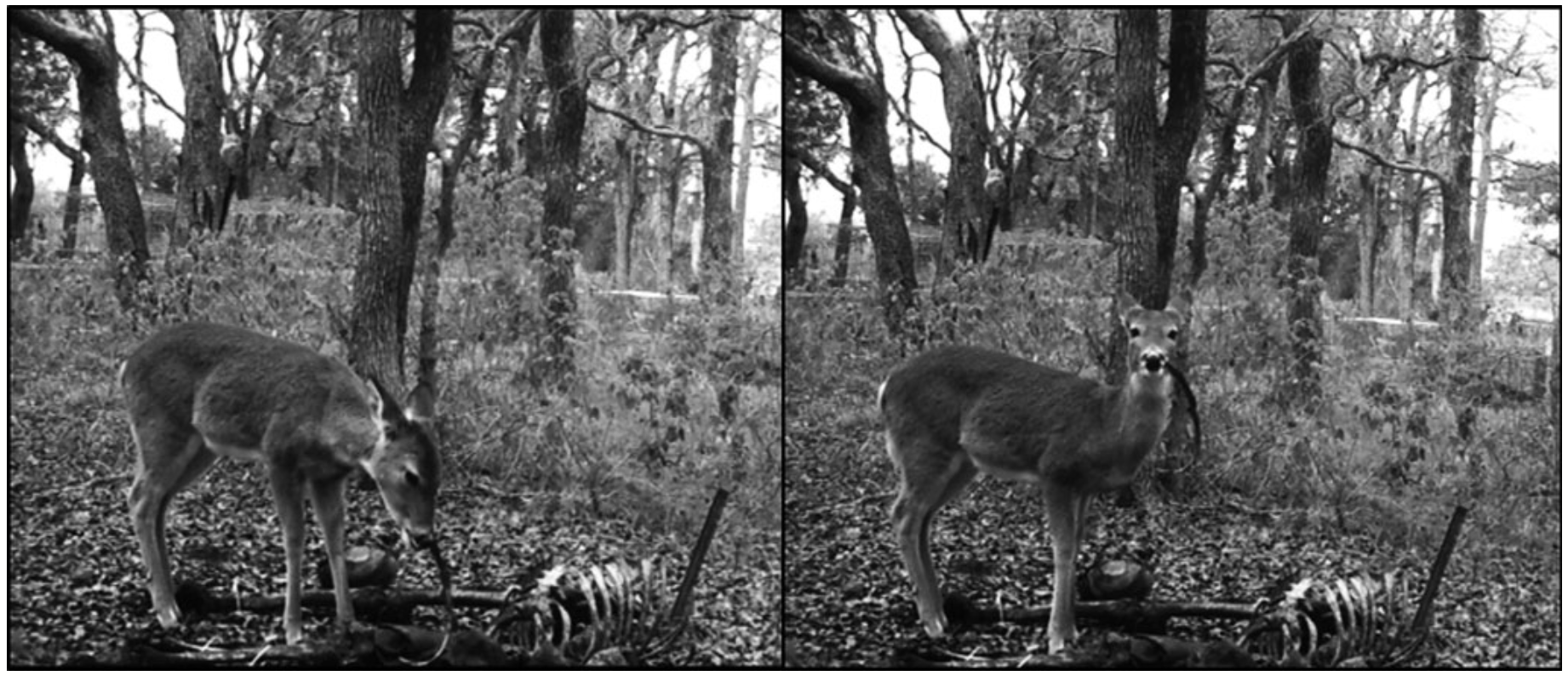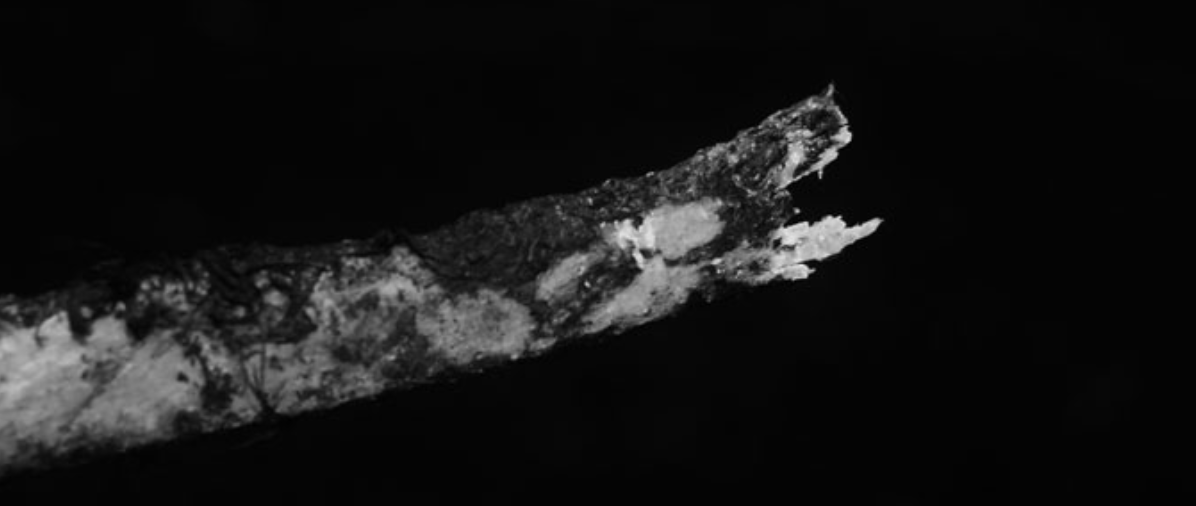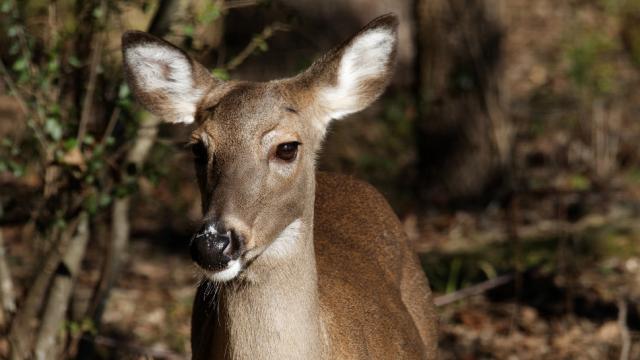Deer are generally considered one of the more benign creatures of the forest, going about their herbivorous ways in peace. But as new research shows, there’s a dark side to these ungulates. Using camera traps, forensic scientists have captured unprecedented photos of deer munching on the skeletal remains of a human carcass.
Image: edbo23
“Herein, we report on the first known photographic evidence of deer gnawing human remains,” write the Texas State University researchers in their new study, which can be found in the Journal of Forensic Sciences. On its own, this behaviour is noteworthy enough, but the finding could prove useful to forensic scientists conducting murder investigations.
Indeed, forensic scientists are often tasked with having to determine the age of corpses in various states of decay. Much of the research in this field is done on so-called body farms, where forensic scientists are able to study human decomposition in detail, and over prolonged timespans.
In the new study, a research team led by Daniel J. Wescott deposited a human corpse in a forested area of the 24-acre Forensic Anthropology Research Facility (FARF) in San Marcos, Texas (the university accepts whole-body human donations for forensic research). The researchers were hoping to study how various scavengers disrupt human remains, and to record the unique signatures left by each animal; armed with this sort of data, scientists can better determine the age of human remains. To that end, they set up a camera trap, and were fully expecting to see images of foxes, raccoons, coyotes and various birds.
Around 190 days after the body was deposited — by which time the corpse was reduced to a mere skeleton — an unexpected visitor arrived on the scene: A single white tailed deer. In photos, the deer could clearly be seen gnawing away at the skeletal remains. A few days later, the deer came back. (Or it could have been another deer — the researchers aren’t entirely sure.) This time, photos showed what appeared to be a rib bone dangling from the deer’s mouth.
Contrary to popular opinion, deer are not true herbivores. Back in 2015, scientists learned that some deer like to pluck and eat baby birds directly from the nest. Nice, eh? Deer have also been observed to eat fish, bats and dead rabbits. These animals are highly adaptable, and they can go into scavenger or carnivore mode when the need arises — typically when their usual sources of nutrition are absent. In the case of the bone-gnawing deer, the animals were probably trying to access dietary minerals.

Credit: L. A. Meckel et al., 2017/Journal of Forensic Sciences
“[The] desire to consume bone, is practiced by ungulates [a hoofed mammal] primarily to obtain phosphorus in addition to supplementing calcium, sodium, and other minerals that are absent from their vegetarian diet during periods of nutritional stress, particularly in the winter months or without seasonal preference,” write the authors in their study. Indeed, the Texas State University researchers documented the bone-gnawing behaviour in January (winter in the US).
Previous research has shown that deer and other ungulates prefer the dry bones of long-dead animals. When they chew on a bone, these animals leave a distinctive forking pattern, which is easily identifiable by forensic scientists. This is in contrast to the marks left by carnivores, who prefer fresh carcasses and leave puncture marks and pits.

The characteristic forking signature made by deers when gnawing on bone. (Credit: L. A. Meckel et al., 2017/Journal of Forensic Sciences)
“This [forking] feature has been described by researchers as an artifact caused by the deer and other ungulates holding the bone in its mouth like a cigar,” write the researchers. “This is the first reported incident in the forensic literature of a deer scavenging human remains indicating that it is important to consider deer scavenging when analysing… modifications to weathered bones in… death investigations.”
The researchers admit that instances like this are bound to be infrequent, but in regions where deer are plentiful, forensic scientists should be on the lookout for this forking pattern. As for the rest of us, we’ll never look at deer the same way again.
